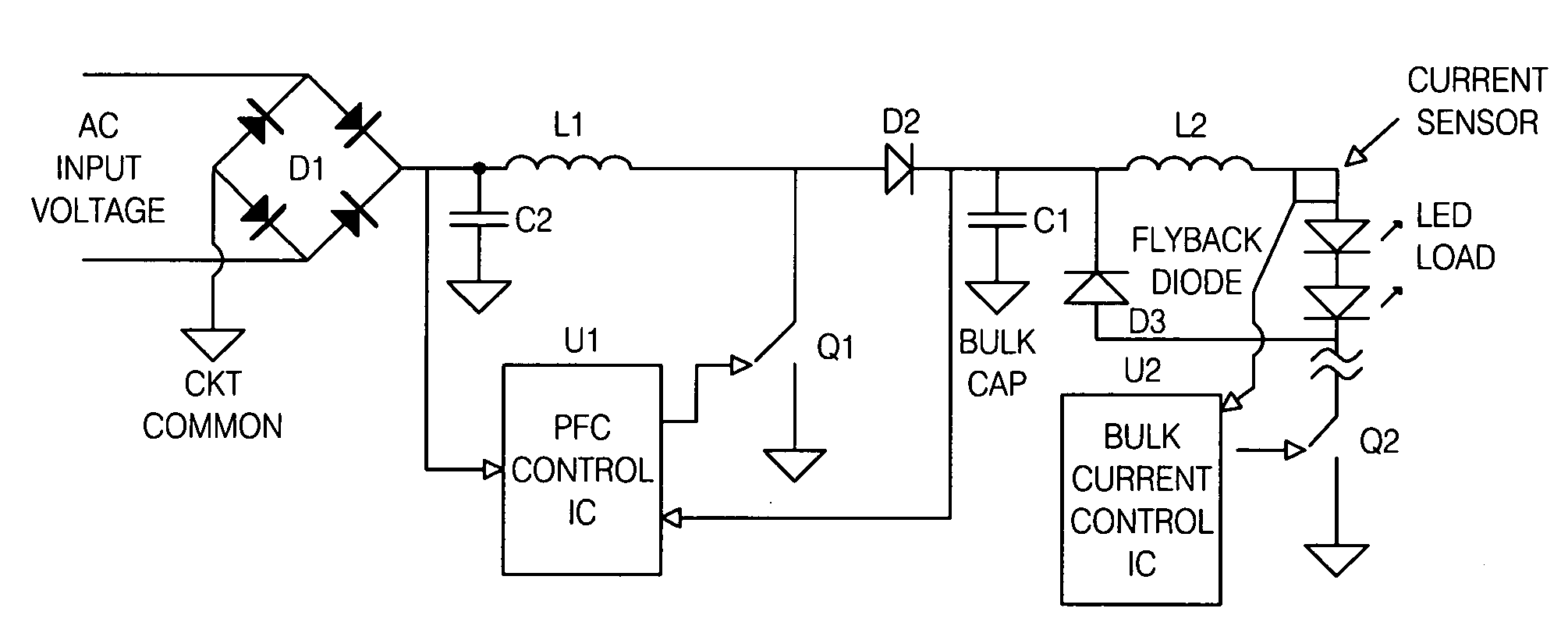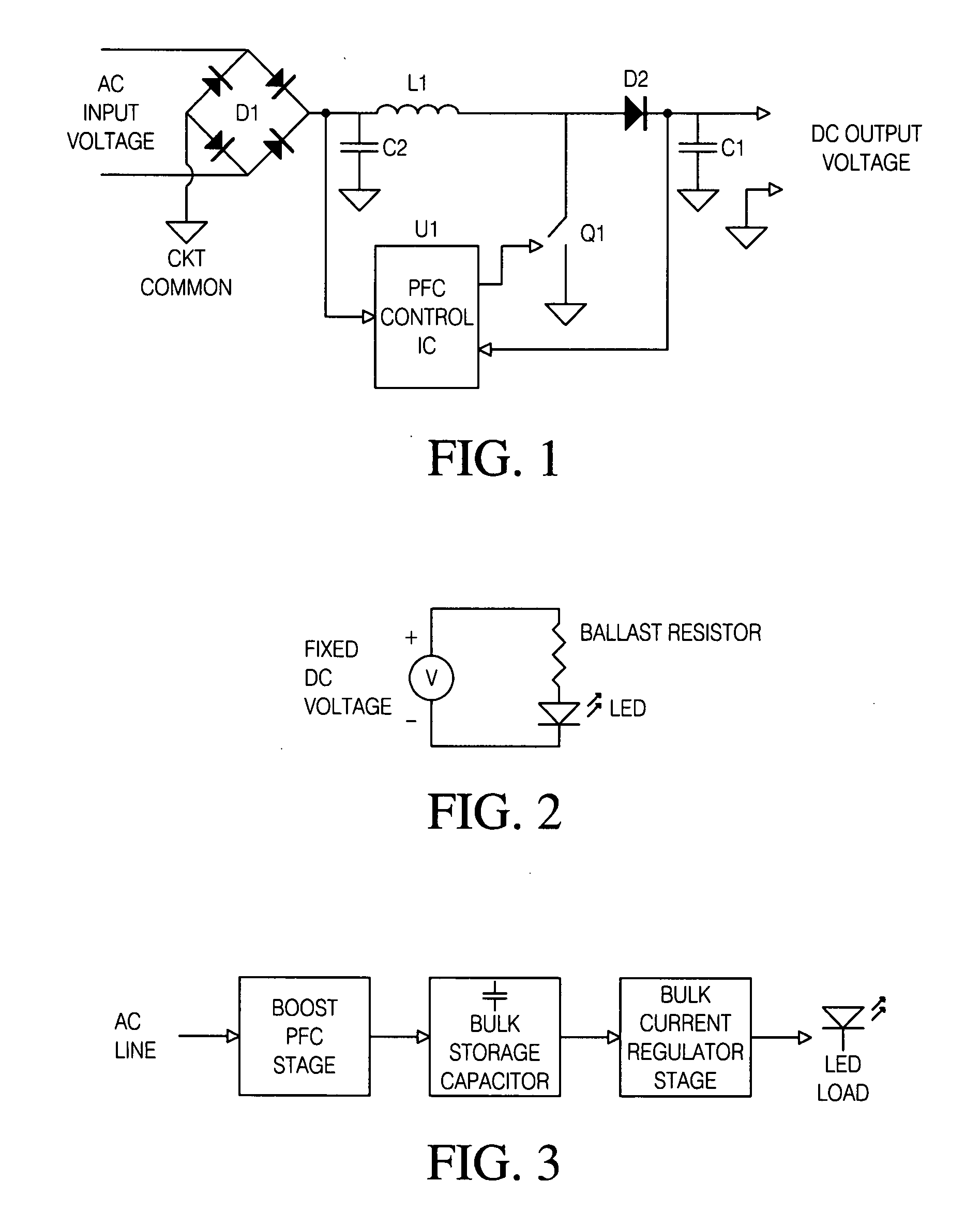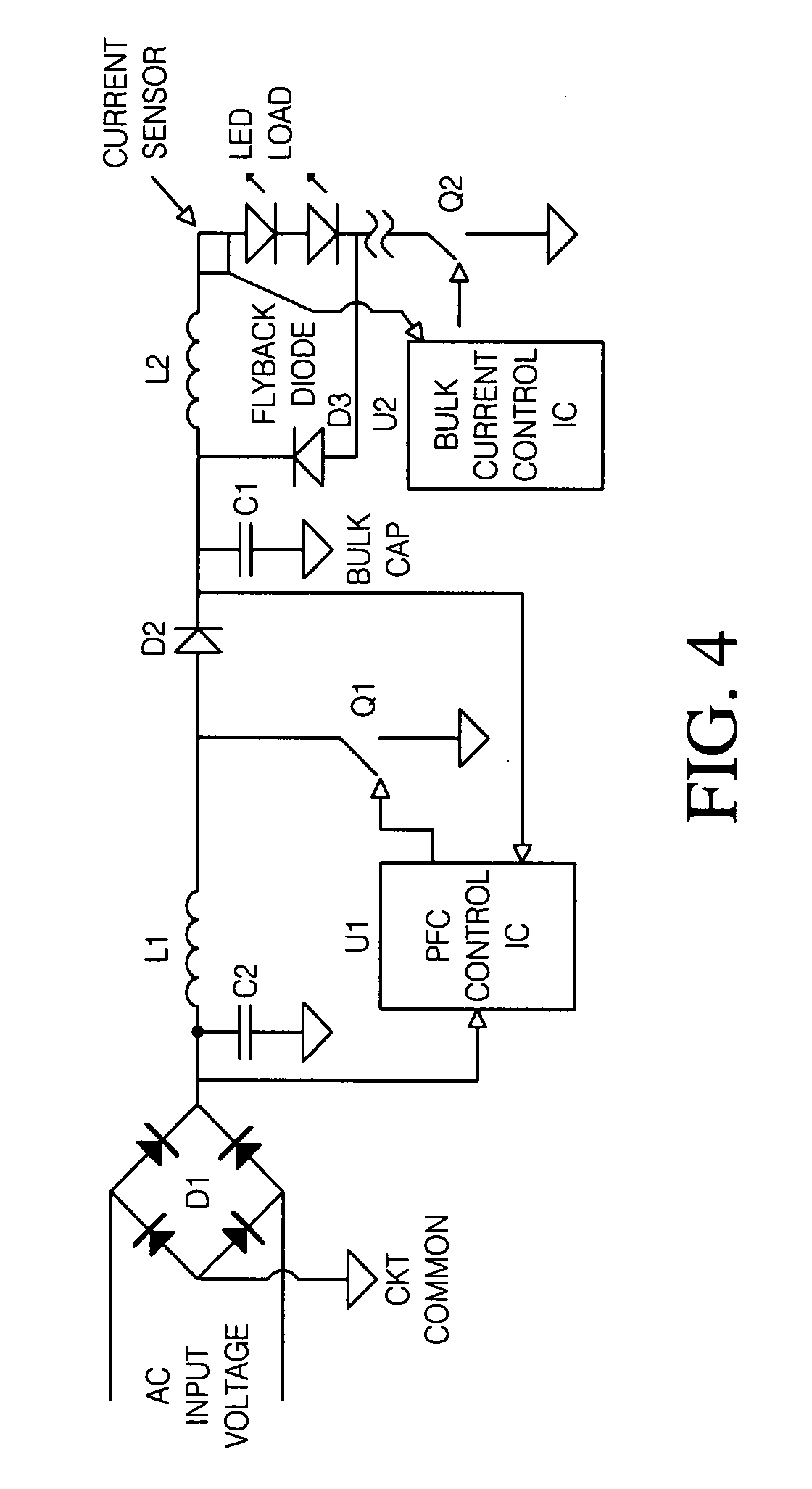LED power supply with options for dimming
a technology of led power supply and dimming, which is applied in the direction of electroluminescent light source, electric lighting source, lighting and heating apparatus, etc., can solve the problems of ineffective method of driving leds, significant variation in forward voltage drop, and inability to drive high-power leds using ballast resistors
- Summary
- Abstract
- Description
- Claims
- Application Information
AI Technical Summary
Problems solved by technology
Method used
Image
Examples
Embodiment Construction
[0043] The goal of this design is to create an AC line powered LED string driver to power the LED string at a regulated current, while using only one switching / conversion stage. It must do this over a wide range of input voltages. Additionally, the circuit must do so while providing galvanic isolation between the primary and secondary circuits while presenting a power-factor-corrected (resistive) load to the incoming utility power.
[0044]FIG. 7 shows the block diagram of a circuit designed to meet these requirements. The incoming AC voltage is full-wave rectified by bridge rectifier D1 and filtered by capacitor C2. The line-modulated (rectified) DC output voltage from the bridge rectifier is applied to the primary of flyback transformer T1. Current through the primary of T1 is switched by semiconductor switch Q1, which is controlled by power factor correction IC U1.
[0045] The primary of T1“looks” like a simple inductor when Q1 is on and primary current flows because secondary recti...
PUM
 Login to View More
Login to View More Abstract
Description
Claims
Application Information
 Login to View More
Login to View More - R&D
- Intellectual Property
- Life Sciences
- Materials
- Tech Scout
- Unparalleled Data Quality
- Higher Quality Content
- 60% Fewer Hallucinations
Browse by: Latest US Patents, China's latest patents, Technical Efficacy Thesaurus, Application Domain, Technology Topic, Popular Technical Reports.
© 2025 PatSnap. All rights reserved.Legal|Privacy policy|Modern Slavery Act Transparency Statement|Sitemap|About US| Contact US: help@patsnap.com



